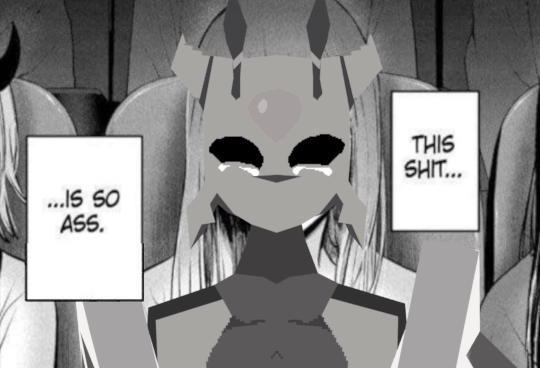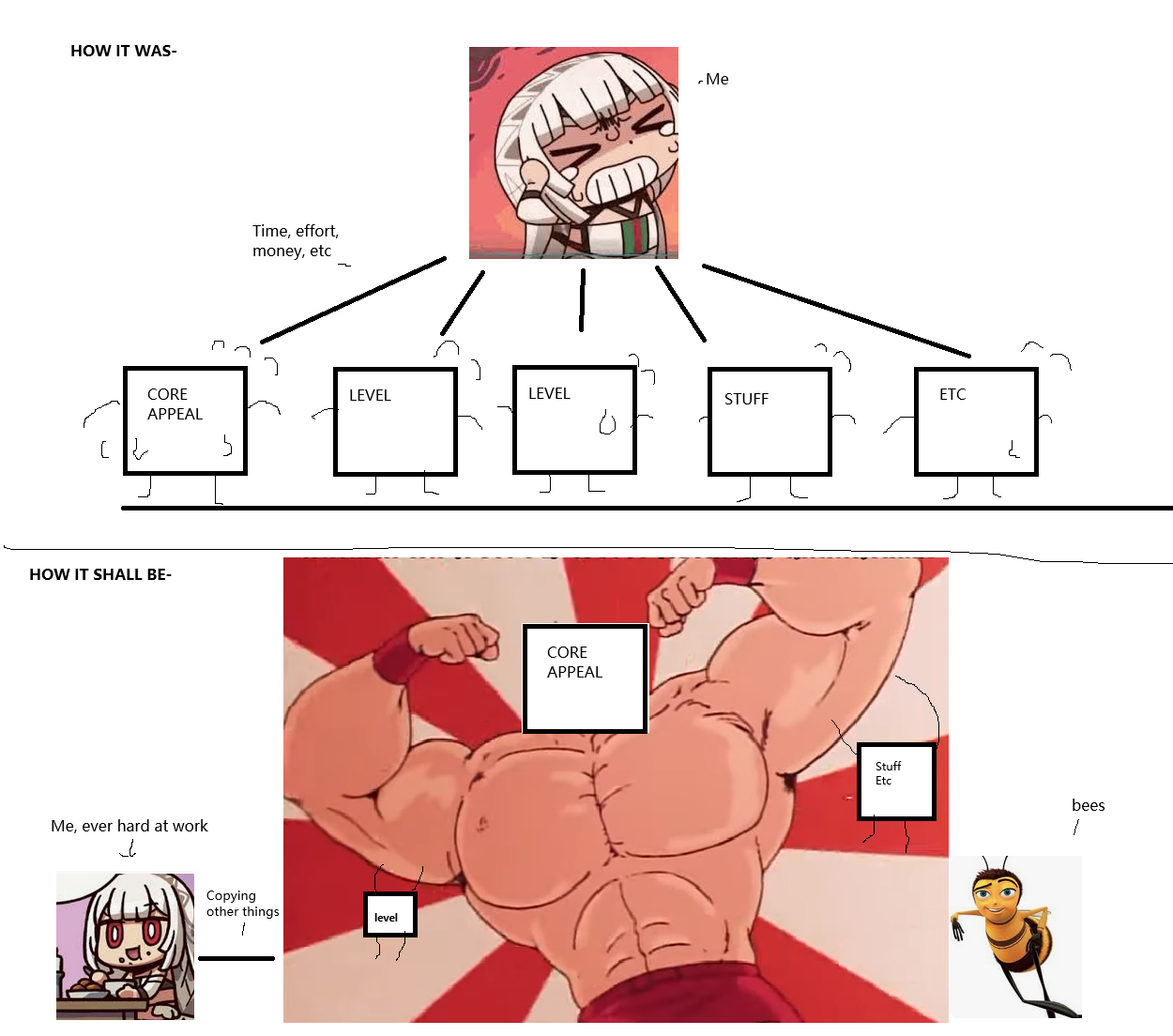Rubine mid-mortem, or "trying to salvaging a flawed idea"

When I got into making Rubine I had a specific vision in mind, which seemed like a good idea at first. I wanted to make a fairly uncomplicated rail shooter/action game hybrid based largely around its central mechanic of a situational reticle system. This was of course inspired largely by Sin & Punishment, except I wanted to go further with it and feature many ways the reticle-based combat would manifest depending on the setpiece. Stages would involve a combination of rail/cabal shooter challenges, beat em up moments, top down segments, anything I could think of so long as it tied into the core mechanic of pointing and aiming.
So up front it's obvious why this approach had obvious holes in it, but I do still stand by what I made at the end of the day. Once one wrapped their heads around the awkward control scheme my playtesters had found it fairly intuitive to play, and it did accomplish a lot of what I had set out to do. So the real reason why I had to pack things up a bit and play the reworking game once again comes down to simple logistics.
To put in bluntly I'm a single person and this particular concept was logistically one of the worst possible endeavors I could have gone for design-wise outside of like turning it into an MMO or something.
Rubine as-is is entirely based around setpieces, all of which have a wide variety of concepts and goals to them. Eternal Guardian Rubine as a game -is- its setpieces, and while this does allow for a ton of variety and excitement, it also meant it was a completely nightmarish timesink that threatened to only get worse if I didn't nip it in the bud here.
When your game is based around setpieces coupled with a relatively simplistic base, it means the entire appeal lies within how good those setpieces are. It's something inherent to shmup and rail shooter design, except with most of those games they restrict themselves to a single gameplay style that iterate upon themselves over the course of the game. With Rubine, there's a multitude of different gameplay styles to juggle in just one level alone, so even with that core principle of aiming and shooting you still need to account for if everything else in that one segment is fun or understandable.
What this amounts to is that not only did every new setpiece mean essentially having to stop and start anew from scratch all the time, it also meant cutting a segment of a level either for consistency, time, or because it just wasn't working was absolutely devastating to the overall project. And a lot of parts needed to be cut, as you could tell, meaning the game as it exists just barely hobbled over the finish line basically a pale shadow of what I envisioned. Needless to say it was a humbling experience that I don't think I walked away from in one piece.
This feeling naturally trickled down to what people generally thought of the game when hands on impressions rolled out. Novel, but with an undeniable feeling it's kind of missing something, like everything just isn't there. A lot of the game has that obvious perpetual unfinished jank to it, but ultimately the game couldn't rise above it due to inherent elements of its design. As EGR is reliant on many individual setpieces, that means the appeal is completely scattershot across all ends of the game. The butter is spread too thin, as one would put it. In the end I had put out a product I felt didn't reflect the standards of quality I held myself to, and quite frankly I don't think doing so was even in the realm of possibility.
Another game had come up during playtesting sessions and feedback over discord, which was Psuedoregalia by my buddy Rittz. At first I had completely somewhat rudely dismissed these comments, but with time I grew to understand what they were talking about there. A lot of indie games tend to forgo this linear approach to game design in favor of a systems-based or character-centric approach, where most of the development effort is placed in the inherent properties of what the character can do, or the systems you're dealt with on screen one. This of course is why so many indie games are infatuated with roguelike elements and procedural generation, and other ways to circumvent the level design process. This also means development time is more quadratic than linear- the game only gets better the more time you spend on its universal properties, as opposed to singular parts of a level, by which time the player might not even bother seeing.
Pseudoregalia is a game where the entire appeal is built into the immutable characteristics of the main character. The way she jumps, moves, her momentum, the mechanics -are- the character, so it means individual aspects of the level design are ultimately supplementary.
Even if a small part of the game sucks ass, the central mechanics can still carry it to the point where it feels inconsequential.
What Rubine was ultimately missing is that Rubine herself wasn't the central design pillar of the game, so that's something I set out to change.
I had taken some time off to play some more games, spoke with some people who left feedback, even consulted Rittz himself for a bit, all to find the main approach I should take from here on out. Rubine as a concept is a somewhat long-in-the-tooth passion project with a lot of baggage to it, so it felt like this kind of sunk cost crash-out was inevitable. There are many different games I want to make, but I feel that leaving Rubine as collateral would let people down and make me look like even more of a deadbeat, and also I made plenty of assets to work with, so continuing with Rubine is a no-brainer. This time though, I wanted to correct my previous mistakes.
My design goals for this particular incarnation of the game were as thus:
1- Wider appeal- While it may seem cynical, I wanted to do away with anything that may come off as overly esoteric and unintuitive, in favor of something that feels good right off the bat. As out of character as it makes me sound, I don't necessarily believe that aiming to broaden your appeal is a bad thing, but rather the specific Lowest Common Denominator approach of trying to appeal to everyone and thus appealing to no-one is a dead end. I believe everything is ultimately appealing to niches, and the niche I had found myself in was receptive but was still left wanting, so it's my job now to adapt to those tastes while keeping it authentic.
2- Making Rubine about Rubine- I mean duh, the game is called that so it stands to reason the main appeal of playing it should lie in the fun factor of controlling the main character herself. Enemies and set dressings come and go, but so it stands to reason that with my limited time, money, and energy, most of it should be invested into the part the player is interacting with the most. It's a fairly well known anecdote during the filming of Monty Python and the Holy Grail one of the set men couldn't quite get the fog machine working and held up filming, to which one of the lead actors I cant actually remember which exhaustively shouted "is the fog funny?"
EGR as of now is way too hung up on a series of malfunctioning fog machines, which contribute little to the overall package but are annoyingly noticeable when they dont work properly. This needs to change.

Honing Rubine down to something more character-based meant focusing on what people liked about it. What of course had to go first is the setpiece-based structure, in favor of a single universal gameplay style. Unfortunately, the core Sin & Punishment influence would have to be wheelbarrowed out. Treasure at their peak were absolute masters of their craft and the S&P duology pretty sturdily occupy my top two spots of my favorite games of all time, but that also means it's a lot to live up to. I frankly dont have the man power or the talent to do what they did. Thankfully, Rubine has a ton of other influences, so it means I can simply narrow that scope a bit.
For this upcoming incarnation of Rubine, I'd take a bit from a few other sources. So it's a little bit Nier, a little Mega Man Legends, little bit EDF, a bit of Gunvalkyrie, the little-appreciated vita classic Malicious Rebirth, a pinch of Gotcha Force, and even Metroid Other M. Something that would pander to the tastes of action game fans, as well as people who just want to make a bunch of low poly explosions happen. Something with a much lower barrier of entry, but could also be broken open by dedicated sickos. More importantly I wanted to make something I could more easily put out so I can actually tell more of the story without getting hung up on the small things. I don't quite consider it starting over, as I have plenty of assets and a framework to work with, and already it's shaping up to be a much better product to actually play, but you're gonna have to take my word for it. (or just more closely follow development on my bluesky)
Get Eternal Guardian Rubine -The First Fight-
Eternal Guardian Rubine -The First Fight-
Hyper 64 bit NAMI-Style Run n Gun action
| Status | Released |
| Author | tirkaroKujo |
| Genre | Action |
| Tags | 3D, Low-poly, No AI, Retro, Robots, run-and-gun |
Comments
Log in with itch.io to leave a comment.
I'm quite excited to see where you go with this in the end, tbh. There are some broken fog machines, but there are also some duck-scales and wooden rabbits, to continue that metaphor. I hope you keep working on it, or something with the bones.